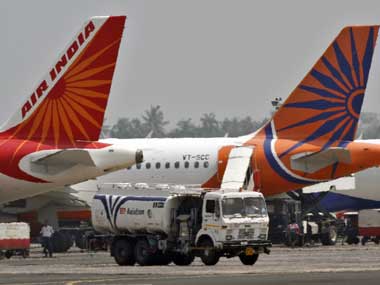New Delhi: Air India is seeking a mid-term correction in its Turnaround Plan as some “assumptions” made in the plan are no longer valid. The government is still committed to infuse Rs 30,000 crore as equity over a decade in Air India to make it stand on its own feet as per this plan. The corrections pertain to Air India’s inability to meet some milestones which were set out in this plan, which the airline wants pushed forward now.[caption id=“attachment_2317494” align=“alignleft” width=“380”]  Representational image. PTI[/caption] A senior airline official claimed all operational milestones set in the TAP have been met though and that the tweaking pertains to things like monetization of properties, fleet expansion etc. Will the reworking of the TAP also involve a suggestion to the government to disinvest in this white elephant - this remains to be seen. We hear there have been enough discussions internally within Air India and among stakeholders over this issue and the airline’s independent directors have already made it known they would favour disinvestment by the government at the earliest. Internal discussions have also centred around divesting government stake in the two subsidiaries of Air India - the ground handling subsidiary AIATSL and AIESL the engineering subsidiary. Here’s what AI wants altered in the TAP: 1) Monetisation: The airline was to have raised Rs 5,000 crore by monetising properties it owns in India and globally by 2021-22. The official quoted earlier said this target is not likely to be achieved since the Ministry of Urban Development has put several end-use clauses. So proposals for selling off properties worth just Rs 250 crore or 5 percent of the target have just now been sent to the cabinet for approval. These include four flats in Mumbai and land in Chennai, Coimbatore. In the next phase, Air India plans to sell properties in Nairobi, Mauritius and Hong Kong to raise another Rs 120 crore. The official did not give a timeline for this second phase but it is clear that the overall monetisation target of Rs 5,000 crore is hardly likely to be met. 2) Fleet expansion: As per TAP, Air India should have had 72 narrow body aircraft in its fleet by now but has only 62. Air India has been looking to lease 19 aircraft of which five are expected to come from China Aircraft Aviation Company. Talks for leasing another 14 are on but these arrive only by 2017. Not only is the fleet expansion plan way behind schedule, Air India also faces numerous problems due to aircraft which are present but are old and require frequent maintenance. At any given time, 9-10 aircraft are on the ground for maintenance, giving the airline an effective narrow body fleet of just about 52-53 aircraft daily. This constrained capacity affects its market share on the domestic network, helps competition and raises Air India’s maintenance costs. 3) Fuel prices: Believe it or not, the TAP has taken it for granted that crude prices would remain around $45 a barrel - never mind price fluctuations for any reasons what so ever. Though crude is quite favourable now, it is still not near the $45 mark and for many years previously it was much higher. The airline wants compensation for this variation in crude on which all other calculations of topline and bottomline were made in the TAP. SBI Caps, which had devised the initial TAP, has again been tasked with the mid-term correction and is expected to revert with a new plan in a month or two. The official quoted earlier said operational parameters defined under the TAP are being met by the airline now. He referred to airline’s network OTP of close to 80 percent, load factors (number of occupied seats) averaging 74-75 percent and yields (revenue per passenger) averaging at Rs 6 per international passenger and Rs 4 per domestic passenger. This official also claimed that 85 percent of Air India’s capacity now meets variable costs (costs of fuel, landing and navigation, pilots’ allowances, catering) versus only 55 percent when the TAP had just been implemented. This fiscal, the airline had sought Rs 4277 crore from the government as per TAP but has been promised only Rs 3,300 crore as of now.
SBI Caps, which had devised the initial TAP, has again been tasked with the mid-term correction and is expected to revert with a new plan in a month or two.
Advertisement
End of Article


)

)
)
)
)
)
)
)
)



